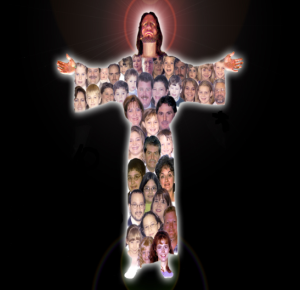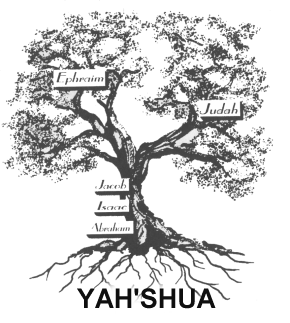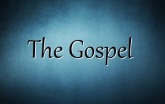If you haven’t already, go to the Glossary Intro – Please Read First page. Thanks!
~~~~~~~~~~~~~~~~~~~~~~~~~~~~~~~~~~~~~
Biblical Feasts – From Zechariah Ministries: The first three feasts . . . Pesach (Passover), Unleavened Bread and First Fruits, fall in March and April. The fourth one, Pentecost (Shavu’ot), occurs in Late May or early June. The last three feasts, Trumpets, Yom Kippur and Sukkot take place in September and October. All of the appointed times of the Lord are listed in the twenty third chapter of Leviticus and follow the Jewish lunar calendar, which is based on the phases of the moon. Each month in a lunar calendar begins with a new moon.
Hebrew Roots adherants believe that keeping the Feasts and Sabbaths given to Israel is mandatory for all Christians today. Much time and effort is exerted in learning and observing them. While some HRMers limit their observances to Feasts and Sabbaths, others believe it mandatory to obey all of the Mosaic Law given to Israel.
Keep in mind that the vast majority of those in the Hebrew Roots Movement are not Jewish. It is not a matter of Jewish Christians carrying on their Jewish heritage, traditions, and customs in conjunction with their faith in Christ. This is a group of Christians who have ostensibly come to the Cross, yet turn around and choose to go back to the Law, ignoring the truths of the completed work of Jesus Christ at the Cross, the Resurrection, and the Ascension and rejecting God’s gift of the New Covenant. (An excellent audio teaching working its way point by point through the scriptural truths of the New Covenant can be found HERE.)
~~~~~~~~~~~~~~~~~~~~~~~~~~~~~
British Israelism (Anglo Israelism) – From Wikipedia – British Israelism (sometimes called Anglo-Israelism) is the belief that that many early Britons, Europeans and/or their royal families were direct lineal descendants of the Lost Tribes of Israel, but rarely the Tribe of Judah.
This belief has been accorded little scientific proof or significance; its significance stems largely from its cultural significance as a concept, and as an idea historically accepted and propounded. Proponents assert that national favor with God is based on a nation’s status as an Israelite nation while individual salvation remains based on a personal relationship with God.
Due to the amorphous nature of this idea over the years, there has rarely been a central head, recognized leadership, or organizational structure to the movement. This has led to a diverse set of professions and beliefs ancillary to the genealogical claims. [See entire article HERE.]
See also Ephaimites as well as Two House Theology below and notice the similarities in those movements with British Israelism. There really is nothing new under the sun. See also under the letter ‘E’ on the Articles Page for articles regarding the Ephraimite/Two House Doctrine.
~~~~~~~~~~~~~~~~~~~~~~~~~
Christianity – orthodox (small ‘o’ – conforming to established Biblical doctrine – not conforming to the traditions of men): Generally means a focus on the essential or core issues of the Christian faith based on the authority of the Scriptures alone. These include: the authority and infallibility of the Bible, the nature of God, the sinful and fallen state of humanity, and salvation by grace through faith in the death, burial, and resurrection of Jesus Christ as the only means of salvation. Where I would have not long ago characterized myself as an evangelical Christian, that label has become so varient in the past few years I find “orthodox with a small ‘o'” to be a more accurate description of the Christian core beliefs to which I adhere. The Statement of Faith page here at JGIG reflects what I believe to be a faithful representation of those essential or core issues of the Christian faith.
Edited to add: Classic Christianity and Faith That Pleases God both by Bob George are excellent resources contending for the Gospel of Jesus Christ. Highly recommended!
~~~~~~~~~~~~~~~~~~~~~~~~~
church (vs. Church) – In HRM teaching, the church (small “c”) is the paganized Catholic church. Most of what’s wrong in Christendom today, according to the HRM, has its origins in paganism and/or the Catholic church. While I would agree that there are significant problems with Catholic doctrine and practices as well as some problems in the Church (Body of Christ) at large, I find that the Hebrew Roots Movement strays at least as far from the Christianity of the Bible with its reliance on extra-biblical sources for structuring its belief system as does either Catholicism or wayward Christianity.
in Christendom today, according to the HRM, has its origins in paganism and/or the Catholic church. While I would agree that there are significant problems with Catholic doctrine and practices as well as some problems in the Church (Body of Christ) at large, I find that the Hebrew Roots Movement strays at least as far from the Christianity of the Bible with its reliance on extra-biblical sources for structuring its belief system as does either Catholicism or wayward Christianity.
HRM teaching says that they are striving to return to the way the early believers worshipped, yet they at the very least twist and at the worst totally disregard the wealth of teaching and instruction contained in the Epistles of the New Testament that gave direction and correction to the fledgling Church (Body of Christ) in the first century. One reason they give for this is that they don’t consider those letters to be part of the Scriptures that the early believers used, that they certainly were not used by Jesus, and that they were not (are not?) considered Scripture at the time (now?).
The HRM solution? They distort, ignore, or outright discard those teachings which they cannot adequately manipulate into their theology (see “Hebrew Roots Movement – Messin’ With the Word” ). They ignore the fact that the early letters written to the fledgling Church were faithfully copied and passed from congregation to congregation as Scripture.
From Bible.org – “The Holy Canon of Scripture” – “. . . (1) In the Apostolic Era. Since the books were inspired when they were written, they were already canonical and possessed authority as being a part of God’s Word. The responsibility of the church was simply to attest to the fact of their inspiration. This process began immediately with the writers recognizing that their own writings were the Word of God (Col. 4:16; 1 Thess. 4:15). But they also recognized that other writings of the New Testament were Scripture and on a par with the Old Testament. In 1 Timothy 5:18 Paul quoted Deuteronomy 25:4 and Luke 10:7 and referred to both passages as Scripture. Peter likewise attested to Paul’s writings as Scripture in 2 Peter 3:15-16. Furthermore, the New Testament epistles were being read and circulated among the churches as authoritative revelation from God (cf. Col. 4:16; 1 Thess. 5:27).” [Bolding mine.]
I found this quote in a book review HERE, but this sentence is applicable to what I see in the Hebrew Roots Movement as well: “Once the Church is decontextualized, the inferred meanings of the texts of the New Testament are removed and new meanings assigned.”
One of the more aberrant definitions of the Church that I’ve seen, according to Avi Ben Mordechai:
“The ‘Church’ is supposed to be a body of Torah Obedient Holy Ones, reflecting in their lives WRITTEN TORAH truth, evident through the life of all Israel. See 1Timothy 3:14-15.” (Source Avi Ben Mordechai – Live on Galatians, slide 75)
Okay, so the Church isn’t the Body of Christ??
“For the husband is the head of the wife as Christ is the head of the church, his body, of which he is the Savior.” (Ephesians 5:23) “Now I rejoice in what was suffered for you, and I fill up in my flesh what is still lacking in regard to Christ’s afflictions, for the sake of his body, which is the church.” (Colossians 1:24).
You have to do some fancy footwork through Scripture to come up with Avi’s definition. Avi Ben Mordechai’s misuse and twisting of scripture is some of the most seductive I’ve seen. His mis-definition of the Church is just the tip of the iceburg. Avi Ben Mordechai also denies the Deity of Christ outright without apology. His denial of the Deity of Christ used to be evident on the Statement of Beliefs page at Avi’s website, but he has changed the statement since I first wrote this, making his stand on the Deity of Christ more ambiguous. As a side note, I have also viewed a 10-part video series hosted by Avi entitled, “Defining Biblical Terms” when it was available on God’s Learning Channel – NOT recommended, by the way! If you read the introduction to this Glossary, Avi demonstrates to the nth degree exactly what I’m talking about there. He leads his students step by step, bit by bit, into absolute heresy using the following tecnique:
One of the things that is really important to be aware of regarding this and other heretical movements is that they engage in the re-definition of terms. Once that is accomplished, those re-defined terms become fields in which seeds of questionable doctrine can be cultivated. And it’s the perfect set up for the same thing cults do: Convince you that what you know isn’t true, or is “incomplete”, then come in with fresh revelation based on previously “hidden” information.
At HRM websites and in HRM teaching materials a consistent technique is employed to bring the reader to where the writer wishes them to go, and I can’t stress this enough:
Faulty definitions, examples, analogies and reasonings are constructed, then those same faulty definitions, examples, analogies and reasonings are built upon as FACT to take the reader to the next doctrinal place the writer wishes the reader to go.
I have seen the same technique over and over in articles and teachings on HRM websites and in discourse with those who hold to Law keeping doctrine from all points on the spectrum.
(See also Hebrew Roots Movement – Salesmanship 101.)
~~~~~~~~~~~~~~~~~~~~~~~~~~~~~~~
Deity (or not) of Christ (Yeshua) – THE foundational truth of the Christian faith is the deity of Jesus Christ – that He is fully God and fully man. He is the incarnation of God in the flesh . . . the Second Adam . . . He who lived a perfect life to the standard of holiness as measured by the Law, and died in our place, in order to provide the payment for our sin and provide our justification before God.
 An immediate mark of a cult is the denial of the deity of Jesus Christ. Cults will praise the works, teachings and character of Jesus all day and night long . . . but they draw the line at His God-hood. Why is that? If they can strip Him of His divinity, they can nullify the work of the Cross.
An immediate mark of a cult is the denial of the deity of Jesus Christ. Cults will praise the works, teachings and character of Jesus all day and night long . . . but they draw the line at His God-hood. Why is that? If they can strip Him of His divinity, they can nullify the work of the Cross.
Some in the Hebrew Roots Movement are quite forthcoming with the deniel of the Deity of Christ. While others say they believe in the deity of Christ (Yeshua), when you read through their teachings, you find that their writings do not support that belief. There are still others in the Law keeping community who do believe that Jesus is God, yet when you take their doctrine to its eventual end, they remove the power of God from the Messiah. In their belief system what Jesus did is not enough – it is not complete. They in effect remove the Godly characteristic of omnipotence from Messiah, since their belief system is a “Jesus + Law” equation. They will deny that salvation requires works, but insist that Torah compliance is mandatory for the born-again believer. Just one of the many contradictions and inconsistencies in the Hebrew Roots Movement.
From Torah of Messiah’s article titled, “Antichrist”: “I am fully persuaded that the anti-Law “God in the flesh” Christ being promoted by Christianity and, to a lesser extent, the God in the flesh Messiah being promoted by counterfeit Messianism is precisely what the spirit of antichrist is since it presents a completely different Christ “IN PLACE OF” the True Messiah! That Christ is, indeed, THE antichrist!”
This is an obvious example of a twisted, NON-Biblical view of Jesus Christ.
~~~~~~~~~~~~~~~~~~~~~~~~~~~~
A movement alternately known as the “Ephraimite,” “Restoration of Israel,” “Two-Covenant Israel,” or “Two House” movement has recently gained ground in some areas among ardent Christian Zionists. Proponents of this movement contend that members of the “born-again” segment of the Christian church are, in fact, actual blood descendants of the ancient Israelites who were exiled in the Assyrian invasion of Israel in 722 B.C.E.
There is a great deal of disagreement and uncertainty about this “doctrine” within the Hebrew Roots Movement itself. From Hebrew Roots site TNN Online:
The Scriptures record that the Northern Kingdom of Israel, also known as Ephraim, was taken by into captivity by Assyria. Although some did join with the Southern Kingdom of Judah, many more were also assimilated into the nations and forgot their heritage as a part of the people of Israel. All of Israel is to be restored prior to the return of the Messiah. Might scattered Ephraim include many non-Jewish Believers who are today being drawn into the Messianic movement? How does this affect our view of the Scriptures? What are some issues that frequently crop up relating to who this “Ephraim” is?
For a pretty thorough overview of the concept of Ephraimites in the Hebrew Roots Movement see “The Ephraimite Error: A Short Summary” from a Jewish perspective, as well as the Hebrew Roots response to that article (from TNN Online), “The ‘Ephraimite Error’: Critical Errors”. Also at TNN Online: “Christian Problems with the Two Houses of Israel” Also see this article, “Ephraimites or Ephra-I-am-nots?”. There’s a fascinating discussion about Ephraimites at the Jews for Jesus Message Board HERE. Several posts there describe a similar doctrine found in the Mormon and Worldwide Church of God belief systems, relayed from first-hand experience. Some excerpts:
“What is not so apparent about the Ephraimite movement is that it is racist in nature. It is an attempt at identification theft. That is to say, unlike replacement theology, which postulates that the church is the successor to Israel, the Ephraimite people believe that they are descendants from the ten tribes. They will twist their genealogies hoping to wring out their Jewish ancestor, as though that might somehow help them be closer to the greatest Jew that ever lived, Jesus Christ. They overlook the fact that Calvary is a new start for everyone, Jew or Gentile.”
And this:
“I was a Mormon for many years. When I was young I received a patriarcle blessing that says I was from the tribe of Ephraim. Most Mormons are told this when they get their blessings.”
And this:
“My husband and I couldn’t agree with you more. We were saved out of the Worldwide church of God. We were heavily indoctrinated in the belief that the lost 10 tribes were scattered all over the “white” populated countries. There were elaborate “proofs” pinpointed, from “Jacob’s Stone” in England to folktales in Ireland. Mr. Armstrong divided the Word incorrectly, using a combustible combination of gnosticism and prooftexting.
I first became aware of the “ephraimite” movement through the Hebraic Roots Network. I was astounded that British Israelitism was merely repackaged as the “Two House” theology. Unfortunately, as with everything, there is a little truth with the error, making it all the more difficult to discern. . . . Context of any Scripture being examined must never be ignored.
One last thought….in Romans 11, Paul specifically talks of gentiles being grafted in by faith, where Jews were broken off by disbelief. One purpose…? To make the Jew jealous. If Paul meant that “Israel” was being grafted in to make the “Jew” jealous, he certainly would have written so. God writes in the Tenach that He would make those who were not His people His….referring to the gentiles.
Another last thought….racism. Currently, there are 58 million, yes, million, House Church Christians in China….so….they aren’t “white”…so where would they fit???? 3 million Black Christians in the Sudan have been martyred to date by Moslims….again, where would they fit into British Israelitism. An estimated 100,000 Christians imprisoned in concentration camps in North Korea…..and on and on we go…..”
That last paragraph in the last post I included from the discussion at the Jews for Jesus Message Board addresses a key issue which the Hebrew Root Movement consistently gets wrong scripturally: The issue of God taking Jew and Gentile and making them ONE in Christ, with Christ being the Root and source of our faith. Neither Jew nor Gentile being “turned into” the other, but each being counted as joint heirs in Christ. The Gospel is God’s provision for redemption for everybody. Take notice of this diagram from a Hebrew Roots site . . . Where are the Gentiles?
Edited to add: Recently on a forum an HRMer posted a teaching by a popular HRM teacher, Jim Staley. Click HERE for my review of his Two House/Ephraimite teaching.
~~~~~~~~~~~~~~~~~~~~~~~~~~~~~
Eisegesis – From Wikipedia: Eisegesis (from Greek εἰς “into” and ending from exegesis from ἐξηγεῖσθαι “to lead out”) is the process of misinterpreting a text in such a way that it introduces one’s own ideas, reading into the text. This is best understood when contrasted with exegesis. While exegesis draws out the meaning from the text, eisegesis occurs when a reader reads his/her interpretation into the text. As a result, exegesis tends to be objective when employed effectively while eisegesis is regarded as highly subjective. An individual who practices eisegesis is known as an eisegete, as someone who practices exegesis is known as an exegete. The term eisegete is often used in a mildly derogatory fashion. (See also the entry, Hermeneutics in the next glossary group, Glossary G-L.)
~~~~~~~~~~~~~~~~~~~~~~~~~~~~~~~~~~~~
Exegesis– ex = from or out of
Exegesis means to get out of the text the meaning that is there. When we exegete a passage, we do our utmost to determine what the passage is saying, not adding anything to it and not taking anything from it.
From Wikipedia: Exegesis (from the Greek ἐξήγησις from ἐξηγεῖσθαι ‘to lead out’) is a critical explanation or interpretation of a text, especially a religious text. Traditionally the term was used primarily for exegesis of the Bible; however, in contemporary usage it has broadened to mean a critical explanation of any text, and the term “Biblical exegesis” is used for greater specificity. The goal of Biblical exegesis is to explore the meaning of the text which then leads to discovering its significance or relevance.
Exegesis includes a wide range of critical disciplines: textual criticism is the investigation into the history and origins of the text, but exegesis may include the study of the historical and cultural backgrounds for the author, the text, and the original audience. Other analysis includes classification of the type of literary genres present in the text, and an analysis of grammatical and syntactical features in the text itself.
The terms exegesis and hermeneutics have been used interchangeably. However, hermeneutics is a more widely defined discipline of interpretation theory: hermeneutics includes the entire framework of the interpretive process, encompassing all forms of communication: written, verbal and nonverbal, while exegesis focuses primarily on the written text. (See also the entry, Hermeneutics in the next glossary group, Glossary G-L.)
~~~~~~~~~~~~~~~~~~~~~~~~~~~~~~~
Forever– [This entry has been edited. Thanks to a friend for a bit of guidance in the language area.] This may seem like a rather odd word to include in a glossary – after all, everybody knows what forever means, right? Not so fast. “Forever” is a word used in the HRM to convince Christians under the New Covenant that the Mosaic Law, the “Instructions”, the Old Covenant, endure as a “forever” Covenant. That the Law did not “pass away”. That the Law was not “nailed to the Cross”. Forever to most of us means from a point in time, whether it be from now or from some point in the past, to an intangible distance in the future (or past, regarding the eternal nature of God) . . . infinity.
Those in the Hebrew Roots Movement count on people thinking of that general definition when it comes to the word “forever” to sway them to believe this: That the verses referring God’s commandments (the Old Covenant) being “forever” binding prove that Christians (even though God has provided a New and superior Covenant, not dependent upon the actions of man Hebrews chapters 8-10) should be Torah observant. Let’s dig a little deeper into what the Hebrew concept of “forever” really means, since, after all, we’re supposed to be thinking with a Hebraic mindset . . .
Hebrew Word for forever – From Crosswalk.com, (source Brown, Driver, Briggs Lexicon) – olam – עולם:
Strongs H5769 –
long duration, antiquity, futurity, for ever, ever, everlasting, evermore, perpetual, old, ancient, world
- ancient time, long time (of past)
- (of future)
- for ever, always
- continuous existence, perpetual
- everlasting, indefinite or unending future, eternity
Olam can mean forever, but doesn’t always mean forever. Its meaning is conditional, depending on the nature of that which is being described.
From Christian-thinktank.com : Olam thus seems to mean ‘indefinitely, with reference to the nature of the thing being so described.’ If the nature is God, then olam means ‘truly eternal’. If the nature is a human, then it means ‘as long as he lives’. If the nature is a relationship, then it means as long as the conditions upon which the relationship is based still hold. And this: And, since we know the Mosaic covenant was a conditional one, it could easily have been understood after the model of many others in the OT/Tanaak: “eternal, as long as the agreed upon conditions are met”. [Though I don’t agree with everything in the article cited, the two statements above give a good description of the conditional nature of the word “olam”.]
We know that while God held up His end of the bargain concerning the Old Covenant, Israel failed again and again when it came to their end of the bargain (rebellion and idolatry). God, in His Grace and Mercy, not only sustained Israel, but provided a New Covenant . . . the terms of which are not dependent on Israel (man), but dependent upon Jesus Christ, God in the flesh, Who perfectly held up His (both) end(s) of the bargain. This is a New Covenant, offered first to Israel, then to all mankind, fulfilling the promise of redemption given to Adam and Eve in the Garden (Romans 1:16).
Even from a Hebrew Roots site, Ancient Hebrew Word Meanings, we get this incomplete meaning of “olam”: The Hebrew word olam means in the far distance. When looking off in the far distance it is difficult to make out any details and what is beyond that horizon cannot be seen. This concept is the olam. [An incomplete concept of “olam” – remember the definition is conditional, depending upon that which is being described.] The word olam is also used for time for the distant past or the distant future as a time that is difficult to know or perceive. This word is frequently translated as eternity or forever but in the English language it is misunderstood to mean a continual span of time that never ends. In the Hebrew mind it is [can  be] simply what is at or beyond the horizon, a very distant time. A common phrase in the Hebrew is “l’olam va’ed” and is usually translated as “forever and ever” but in the Hebrew it means “to the distant horizon and again” meaning “a very distant time and even further” and is used to express the idea of a very ancient or future time.
be] simply what is at or beyond the horizon, a very distant time. A common phrase in the Hebrew is “l’olam va’ed” and is usually translated as “forever and ever” but in the Hebrew it means “to the distant horizon and again” meaning “a very distant time and even further” and is used to express the idea of a very ancient or future time.
So in the Hebraic mindset, forever does not necessarily mean from a point in time to infinity. In fact, the concept of “olam”, when speaking of the Israelites’ failure in regard to the terms of the Old Covenant, flows beautifully into the truths of the New Covenant.
See also:
~~~~~~~~~~~~~~~~~~~~~~~~~
~~~~~~~~~~~~~~~~~~~~~~~~~





















We have family who recently were drawn into a Hebrew Roots cult group in the Kerrville TX area. It was sad to see people who had spent all their lives as followers of Christ denounce their Christianity and even the Trinity. They even go so far as to re-baptize themselves into this new religion. They also proclaim themselves gods. After researching all their doctrines it became clear to me that they had more in common with Mormonism and even Satanists as they preach against the “Sunday Morning” church. They also isolate themselves and talk a great deal about there being no hell and how they are the true nation of Israel. This group is led by a man who was kicked out of his pastor role and pulled a lot of the congregation over to his new heresies. It’s a very sad thing to observe and we pray for them to return to the Gospel of Jesus and escape this spiritually dangerous doctrine.